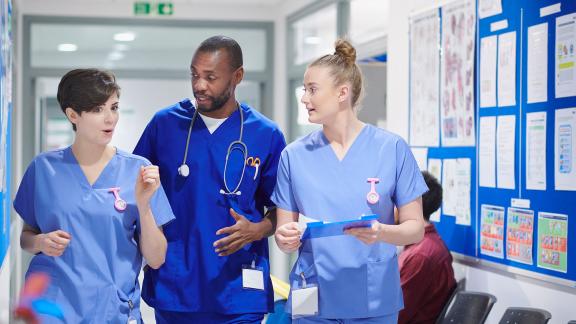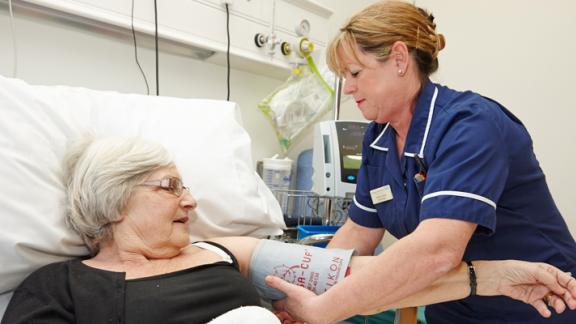Returning to work in the NHS [Withdrawn]

The following DHSC guidance was withdrawn on 7 July 2022 and is now archived.
The mobilisation effort means that staff will be working in a range of settings, not necessarily returning to their old employer. However, most may be returning to the pay band before they retired. The intention is to ensure that in the current exceptional circumstances, trusts can quickly deploy staff and that staff have clarity on the pay they can expect to receive when they return to work.
Agenda for Change staff - during the emergency period, if staff return to work in roles covered by Agenda for Change terms and conditions for substantive staff, they should be paid at the top of the appropriate pay band for the role they are fulfilling, providing they previously worked in that pay band or higher.
Medical staff – if they retired from a medical role, staff should be paid on the appropriate contract for the role they are fulfilling, providing they return to the same level of responsibility.
All staff who return to work in the NHS after retirement will be paid the substantive rate for their role. The pay point should not be lower than the pay point before they retired, unless the staff member wishes to work in a more junior role (see below).
The actual amount and the frequency should be confirmed by the employer.
Staff who want to return to a more junior role
If staff want to return to a more junior role than the role they retired from, they should be paid the top of the pay scale in the more junior role.
Staff who choose to return to work during maternity, adoption and shared parental leave, or end their leave early
The NHS offers generous occupational maternity, adoption, and shared parental leave pay, well above statutory levels. However, for staff who choose to work when they would otherwise be on leave, it is important that they do not lose their contractual entitlement.
Staff can work up to ten keeping in touch (KIT) days while on maternity or adoption leave, without bringing their maternity/adoption leave to an end. Staff on shared parental leave can work up to 20 shared parental leave in touch (SPLiT) days without ending their shared parental leave. This means that many employees will have access to up to 30 days where they can work, without bringing their paid family-related leave entitlements to an end.
Should employees wish to work more than this, ordinarily it would end their statutory and contractual family-related leave and pay entitlements. NHS organisations cannot change the legal rules around statutory payments and leave, but should staff wish to end their maternity, adoption or shared parental leave early to assist in the pandemic, NHS employers may wish to consider flexible options so staff do not lose out on any of their contractual entitlements.
This might, for example, include allowing an individual to take contractual paid leave in lieu of the weeks of family-related leave and pay that the employee gave up to support the NHS during the pandemic, at a later date.
The rights and special protections that apply to women on maternity leave and to parents on other types of family-related leave will not apply to periods of contractual leave taken in lieu of any weeks of maternity, adoption and shared parental leave that an employee gives up when they end their leave early. The appropriateness of putting such arrangements in place should be carefully considered on a case-by-case basis, with risk assessments where necessary, and only where an NHS employer and the individual employee consent, and should not be forced on individual employees.
Staff who have not retired, but just left the NHS
If staff have not retired, but left NHS employment, and they return to work in roles covered by NHS national terms and conditions of service, they should be paid at the top of the appropriate pay scale for the role they are filling, providing they are returning to the same level of responsibility.
They will be paid the substantive rate for the role. The actual amount and the frequency should be confirmed by their employer.
Individuals who have not retired but return to NHS service are automatically enrolled into the NHS Pension Scheme when they re-enter NHS employment with an NHS organisation.
Membership of the NHS Pension Scheme is voluntary, and staff can opt out if they wish. If an individual opts out within the first pay period after starting NHS employment, the individual is treated as having never joined the scheme.
High earners should be made aware of potential pension tax implications of building up further pension. For example, an individual may have a protected lifetime allowance limit. More information can be found in the NHS Pension Scheme section of this guidance.
Impact on pensions when staff return to work
If staff have already taken their pension, the government is removing any restrictions on the amount of work they can do without losing any of their pension during the emergency.
If they retired from the 1995 NHS Pension Scheme, they will no longer be limited to having to work 16 hours a week in the first four weeks after retirement.
For staff who want to take partial retirement from the 2008 and 2015 pension schemes, they will not be required to reduce their pay in order to claim pension.
If staff are a Special Class scheme member with the right to take their pension unreduced at age 55, they will no longer be subject to the current restrictions, called abatement, in the amount of work they are allowed to do before losing their pension between the ages of 55 and 60. This new rule will apply both to retired staff returning to the NHS and those who have already returned to work. Special Class status can be held by nurses, midwives, physiotherapists and mental health officers. This factsheet defines Special Class eligibility.



